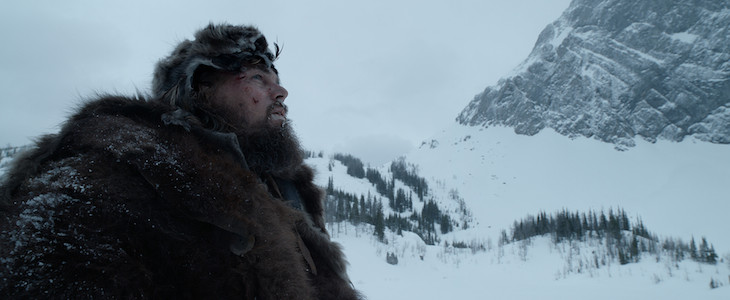
ReelBob: ‘The Revenant’
By Bob Bloom
“The Revenant” is a technically impressive movie that compensates for a ponderous and drawn-out, man-against-nature, revenge story.
Academy Award-winning director Alejandro Gonzalez Inárritu has switched from the confines of “Birdman’s” New York theater to the wild expanses of an 1820s winter wilderness, packed with snow, ice, frigid temperatures and treacherous terrain as well as hostile Indians.
The problem with “The Revenant” is that Inárritu and his cinematographer, Emmanuel Lubezki, continually intrude on the story, using such tricks as having actors fog up the camera lens, so you know they are really out in the cold.
The point of a movie should be to tell the story and advance the plot, not to show off the talents of the people behind the camera.
It is as if Inárritu and Lubezki need affirmation of their talents by jumping and waving their arms in the background cinematically shouting, “Look at us! Look at us!”
Their techniques are an unnecessary distraction.
At nearly 160 minutes, “The Revenant” is too long and cumbersome, as it tells the harrowing survival story of Hugh Glass (Leonardo DiCaprio), an explorer who is guiding a fur-trapping expedition.
Indians attack the trappers, wanting their pelts. Glass leads the survivors to safety, and during that trek, he is brutally mauled and severely wounded by a bear — one of the film’s most harrowing sequences.
While the others proceed to the safety of a fort, three men, including Glass’ son, stay behind to either tend or bury him.
One of the men, John Fitzgerald (Tom Hardy), a greedy mercenary, tries to kill Glass so his party can move on.
Interrupted by Glass’ son, Fitzgerald kills the young man, tells the other survivor that Glass died, and covers the guide in dirt.
Glass somehow finds the strength to pull himself from his grave — like Lazarus rising from the dead — and finds his dead son.
Swearing vengeance, the explorer slowly crawls, stumbles and finally begins to limp his way back to civilization.
DiCaprio gives a very committed physical performance. It is excruciating and painful to watch him drag his ravaged body through a harsh wilderness, driven solely by a desire for retribution.
His lengthy journey, filled with hallucinatory visits by the spirit of his dead Indian wife, makes his trek so much more tedious. While you come to admire DiCaprio’s dedication, you begin to wish that he would move faster.
A 1971 film, “Man in the Wilderness,” based mostly of the same source material, starred Richard Harris as Zachary Bass, loosely based on Glass, who went through the same experience, but in a mere 104 minutes.
“The Revenant” plays more on your senses of sight and sound than your emotions. You sense that Inárritu and Lubezki made the movie just to prove that a feature could be produced in such harsh conditions, with minimum use of green screen, CGI gimmicks or the use of a soundstage.
Like the 19th-century wilderness in which it is set, “The Revenant” is cold and uninviting. Like Fitzgerald, it abandons its audience for the sack of cinematic gimmickry.
In all, “The Revenant” is an overblown B-movie, a lumbering feature that you endure rather than enjoy.
Bloom is a member of the Indiana Film Journalists Association. His reviews appear at ReelBob (reelbob.com) and The Film Yap (filmyap.com). He also reviews Blu-rays and DVDs. He can be reached by email at bobbloomjc@gmail.com or on Twitter @ReelBobBloom. Other reviews by Bloom can be found at Rottentomatoes: www.rottentomatoes.com.
THE REVENANT
2 stars out of 4
(R), graphic and gory violence, nudity, sexual situations, language, disturbing images
